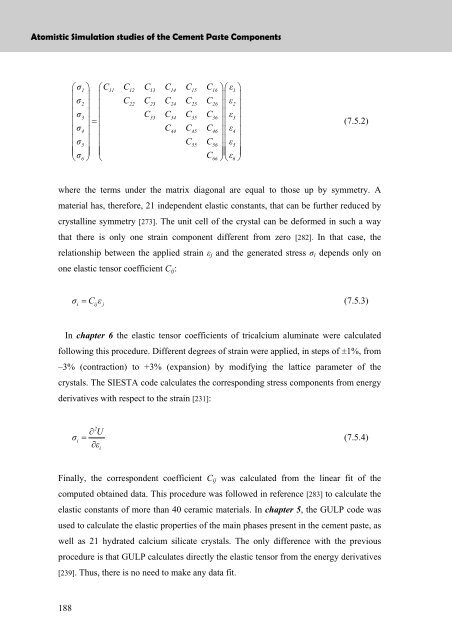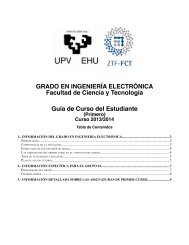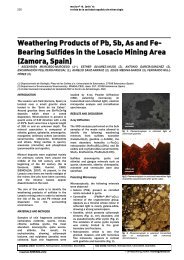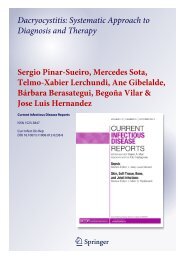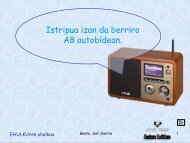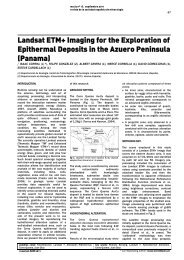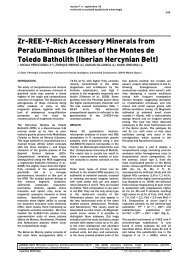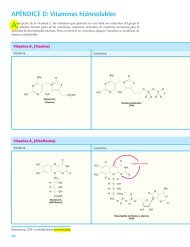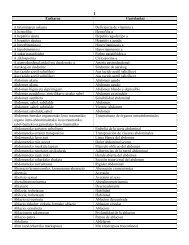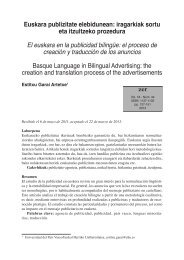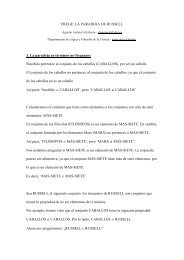Atomistic Simulation studies of the Cement Paste Components
Atomistic Simulation studies of the Cement Paste Components
Atomistic Simulation studies of the Cement Paste Components
You also want an ePaper? Increase the reach of your titles
YUMPU automatically turns print PDFs into web optimized ePapers that Google loves.
<strong>Atomistic</strong> <strong>Simulation</strong> <strong>studies</strong> <strong>of</strong> <strong>the</strong> <strong>Cement</strong> <strong>Paste</strong> <strong>Components</strong><br />
⎛σ1⎞ ⎛C11 C12 C13 C14 C15 C16 ⎞⎛ε1⎞<br />
⎜ ⎟ ⎜ ⎟⎜ ⎟<br />
⎜<br />
σ2⎟ ⎜<br />
C22 C23 C24 C25 C26 ⎟⎜<br />
ε2⎟<br />
⎜σ ⎟ ⎜<br />
3<br />
C33 C34 C35 C ⎟⎜<br />
36<br />
ε ⎟<br />
3<br />
⎜ ⎟=<br />
⎜ ⎟⎜ ⎟<br />
⎜σ4⎟ ⎜ C44 C45 C46 ⎟⎜ε4⎟<br />
⎜σ ⎟ ⎜ C C ⎟⎜ε<br />
⎟<br />
5 55 56 5<br />
⎜ σ ⎟ ⎜ 6<br />
C ⎟⎜<br />
66<br />
ε ⎟<br />
⎝ ⎠ ⎝ ⎠⎝ 6 ⎠<br />
(7.5.2)<br />
where <strong>the</strong> terms under <strong>the</strong> matrix diagonal are equal to those up by symmetry. A<br />
material has, <strong>the</strong>refore, 21 independent elastic constants, that can be fur<strong>the</strong>r reduced by<br />
crystalline symmetry [273]. The unit cell <strong>of</strong> <strong>the</strong> crystal can be deformed in such a way<br />
that <strong>the</strong>re is only one strain component different from zero [282]. In that case, <strong>the</strong><br />
relationship between <strong>the</strong> applied strain ε j and <strong>the</strong> generated stress σ i depends only on<br />
one elastic tensor coefficient C ij :<br />
σ<br />
= C ε<br />
(7.5.3)<br />
i ij j<br />
In chapter 6 <strong>the</strong> elastic tensor coefficients <strong>of</strong> tricalcium aluminate were calculated<br />
following this procedure. Different degrees <strong>of</strong> strain were applied, in steps <strong>of</strong> ±1%, from<br />
–3% (contraction) to +3% (expansion) by modifying <strong>the</strong> lattice parameter <strong>of</strong> <strong>the</strong><br />
crystals. The SIESTA code calculates <strong>the</strong> corresponding stress components from energy<br />
derivatives with respect to <strong>the</strong> strain [231]:<br />
σ<br />
i<br />
2<br />
∂ U<br />
= (7.5.4)<br />
∂ ε<br />
i<br />
Finally, <strong>the</strong> correspondent coefficient C ij was calculated from <strong>the</strong> linear fit <strong>of</strong> <strong>the</strong><br />
computed obtained data. This procedure was followed in reference [283] to calculate <strong>the</strong><br />
elastic constants <strong>of</strong> more than 40 ceramic materials. In chapter 5, <strong>the</strong> GULP code was<br />
used to calculate <strong>the</strong> elastic properties <strong>of</strong> <strong>the</strong> main phases present in <strong>the</strong> cement paste, as<br />
well as 21 hydrated calcium silicate crystals. The only difference with <strong>the</strong> previous<br />
procedure is that GULP calculates directly <strong>the</strong> elastic tensor from <strong>the</strong> energy derivatives<br />
[239]. Thus, <strong>the</strong>re is no need to make any data fit.<br />
188


